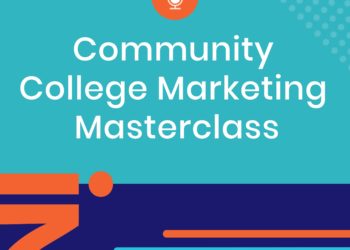
In this episode of the Community College Marketing MasterClass Podcast, Adam Lopez, the Esports Coordinator and coach at Imperial Valley College, joins Interact CEO Dr. Pam Cox-Otto and Student Social… Read More – Esports at Community Colleges
Success Stories April 27, 2018

It’s all about buy-in. Buy-in from faculty, buy-in from staff and buy-in from students. That’s the message from those California community colleges that have successfully packaged the scores of degrees and certificates being offered into career clusters known as “meta-majors.”
At MiraCosta College, identifying these meta majors entailed an online student survey that yielded close to 1,900 responses. At Reedley College, 279 faculty, staff and administrators spent two days in various meta major grouping activities, in partnership with the Career Ladders Project. At Norco College, the process evolved through brown bag sessions in which participants took sticky notes listing the certificates and degrees offered at the campus, and organized them into areas of common interest.
With more than 250 degrees and certificates available at Mt. San Antonio College, buy-in from faculty was pivotal in moving forward, said Vice President of Instruction Irene Malmgren. And that meant 120 or so faculty and staff coming together to sort through cards, each listing just one degree or certificate, and grouping them into eight different areas. Some 500 first-year students went through the same exercise before Mt. SAC developed its eight meta-majors (also called “career clusters”).
Why bother?
“Looking at what a college can offer is like walking into Costco for the first time,” said Malmgren. “You’re so overwhelmed by the options that you either turn around and leave or you stay and try to navigate your way around the store, but end up buying more than you need. That’s what’s happening to our college students. They can be so overwhelmed by the options that they either walk away or they spend money on far more units than they need to reach their goal.”
Indeed, meta majors have become a key component of the Guided Pathways framework. They are seen as vital to boosting completion rates by providing students with a clear roadmap of the courses they must take and the requirements they must meet to reach their goal.
Among the initial steps in creating meta-majors at MiraCosta College was convening a group to work with an Achieving the Dream leadership coach and investigating meta-major models at other schools. Drafts of meta-major categories and discipline groupings followed. As part of an All College Day workshop, more than 40 groups (comprised of up to 10 people each) were invited to provide feedback.
“This input was used to inform planning and to edit the draft model of MiraCosta’s meta-majors, leading to changes to the names of some of the groupings, and to the placement of some of the disciplines within them,” states a meta-majors work group report.
In work groups by school, chairs and deans were invited to comment on the evolving model, the titles of meta-major categories, and the placement of disciplines within them. As further revisions were being made, student focus groups provided feedback on their experience in navigating roadmaps already in place. That was followed by an online student survey that took two weeks and yielded 1,850 responses.
The result: students said they wanted more guidance on what classes to take, noted that too much time and money were spent on classes that were not required for a degree or certificate, and that even when they knew what they wanted to study, they didn’t always know what kind of jobs they could get with a particular degree, certificate or transfer pathway.
Nearly everyone said the term ‘meta-major’ was “too 2015.” They favored the far less bureaucratic term of “Academic and Career Pathways.”
Today, MiraCosta College has a new Academic and Career Pathways web page that includes six routes to completion, each detailing career opportunities and testimonials from students who have pursued a particular pathway. Students can explore various programs of study, with several of those programs linking to maps laying out a semester-by-semester sequence of courses needed to earn a degree or certificate.
A similar process took place at Norco College, where meta-majors were among the areas seen as vital in the college’s completion initiative. “We have over 70 certificates and degrees, we saw that clumping those together in a way that made more sense for our students was the way to go, and we also recognized that the pathways needed be clearly outlined and divided,” said Vice President of Student Services Monica Green.
Brown bag workshops, group meetings, faculty and student feedback – and sticky notes – proved pivotal. Like MiraCosta, Norco College ditched the term “meta-majors,” settling instead on a taxonomy that distinguished Arts and Humanities, Social and Behavioral Studies, Business and STEM. The process was driven by faculty and student feedback throughout.
Reedley College partnered with the Career Ladders Project for two days of grouping activities, in which all faculty, staff and administrators were personally invited to take part. Eight workshops were held on March 16 and 23, and 279 people participated in a meta-major grouping activity.
“I think the most important thing we learned was the importance of making time and space to have cross-functional dialog about Guided Pathways,” said Stephanie Curry, Reedley College’s Academic Senate president. “Providing these workshops allowed faculty, staff and administrators the opportunity to work and talk with colleagues from across campus whom with they don’t normally have interaction.”
VIDEO: Rob Johnstone, President and Founder of the National Center for Inquiry & Improvement, explains meta-majors and how they help students.

In this episode of the Community College Marketing MasterClass Podcast, Adam Lopez, the Esports Coordinator and coach at Imperial Valley College, joins Interact CEO Dr. Pam Cox-Otto and Student Social… Read More – Esports at Community Colleges


Discovering and understanding your marketing team’s interpersonal needs can potentially help your team be more productive and happier as you ramp up your marketing efforts.